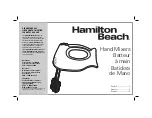
Page 54
Voyager OS User’s Manual - Glossary
Page 55
Voyager User’s Manual - Glossary
Mixer – A circuit for combining multiple sound sources or signals.
Modulation – Modulation is the use of a control voltage to shape a tone. Modulation has a source, a destination,
and an amount. This could be as simple as the fi lter cutoff of a VCF (a modulation destination) being
changed by the front panel cutoff control (the source), or as complex as mixing multiple CVs together to
modulate fi lter cutoff. Modulation is used in synthesis to create complex sounds and add variation.
Noise – A random audio signal having no fundamental, and where all the harmonics have equal strength (more
or less). Noise can be used as either an audio or modulation source. When used as an audio source, noise
can be used by itself to synthesize explosions or wind noises, or can be mixed with other waveforms to
create noise artifacts, such as breath sounds. When used as a modulation source, noise can introduce
instabilities to a sound, such as a ‘pitch cloud’ effect when noise modulates an oscillator. In the Voyager OS,
noise is available both as a sound source and a modulation source.
Oscillator – A circuit that electronically “vibrates”. When used as a sound source, an oscillator is the electronic
equivalent of a vibrating reed, or string. When amplifi ed, an oscillator produces a pitched sound whose
frequency is determined by one or more control voltages. Changes to these voltages correspond to
changes in pitch. An oscillator’s vibration can have different shapes or waveforms, such as a triangle,
sawtooth, or square wave. The Voyager OS has three oscillators for generating sounds.
Pitch – The subjective perception of sound. A bass guitar generates low pitches, while a fl ute generates high
pitches.
Pole (or poles) – A term referring to the design of a fi lter circuit. Each fi lter pole adds 6dB/Octave of
attenuation to the fi lter response, so while a single pole fi lter has a 6dB/Octave response, a 4-pole fi lter has
a 24dB/Octave response. The Voyager OS has two 4-pole fi lters.
Sample and Hold (S&H) – A circuit that generates a control voltage corresponding to the input signal at the
time a trigger or gate signal is received. Sample and hold circuits commonly employ white noise as a signal
source, taking periodic samples of this signal and holding that sample (a voltage level) until the next sample is
taken. Since the signal source is noise (a random audio signal), the output of the S&H circuit is also random.
The sampling interval is typically controlled by a low frequency oscillator (LFO). By adjusting the speed
of the LFO, the speed of the S&H circuit can be varied. The S&H output is available as a programmable
modulation source.
Sound – Audible vibrations of air pressure. For electronic sounds such as those produced by a synthesizer,
loudspeakers are used translate the electrical vibrations into the changes in air pressure which we perceive
as sound.
Subtractive synthesis – A method of creating tones using harmonically rich (bright) source material, and then
removing (or in some cases emphasizing) various frequency components to create the desired sound.
Synthesis – The generation of sound by electronic means, where the programmer or performer has the ability to
change the pitch, volume, timbre and articulation.
Содержание Voyager Old School
Страница 10: ...Page 12 Voyager OS User s Manual The Basics TheVoyager OS Modulation Buss...
Страница 55: ...Page 57 Voyager OS User s Manual...
Страница 56: ...Page 58 Voyager OS User s Manual...






































